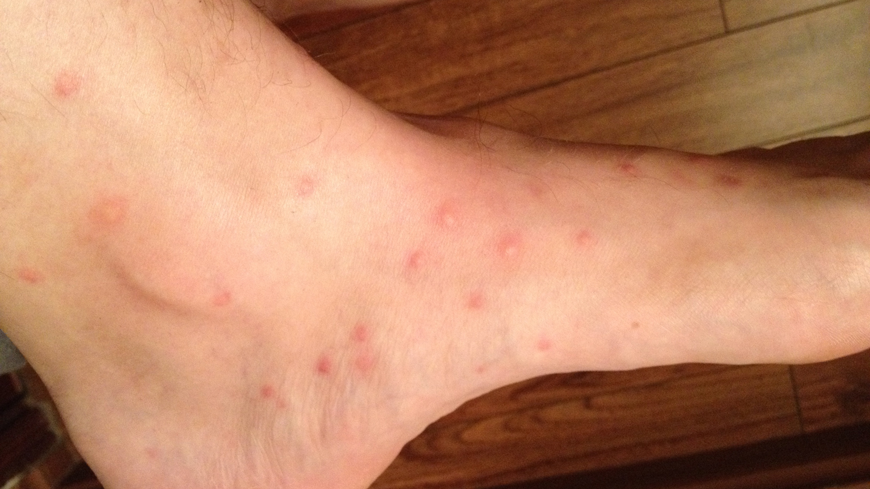
Img 1 Numerous papules caused by flea bites. They have diameters of 1 to 3 mm.
Summary
Flea bites initially create an area of elevated skin (wheal) measuring 2-10 mm in diameter. In 24 hours, 1-3 mm papules (welts) form. Accompanying redness can reach a diameter of 2-20 mm. The lesions begin diminishing in size at 48 hours.
Details
Puncture Mark: Pinpoint
A red, pinpoint-sized mark may be found at the center of flea bites. This is where the feeding flea ruptured the skin and blood vessel. The mark is called the hemorrhagic punctum.
Wheals: 2-10 mm
The first reaction flea bites is whealing, where skin elevates at the bite location. Wheals are irregular-shaped and measure 2 to 10 millimeters in diameter. Their margins may or may not be clearly defined. Reddening (erythema) sometimes accompanies the wheal, and can extend beyond 20 mm.
Papules: 1-3 mm
The wheal fades within 24 hours and is replaced by a smaller lesion called a papule. A papule is a raised, indurated (firm) area of skin. It appears as a small bump or welt Img 1. Papules themselves are 1 to 3 mm. However, they’re often surrounded by reddening (solar erythema) which can extend the diameter up to 20 millimeters. Papules peak in size at 24 hours and can be seen shrinking at 48 hours.
Blisters: 3-6 mm
Flea bites can cause more extreme reactions in allergic individuals, such as blisters. In these cases, the lesion is initially composed of numerous, tiny, fluid-filled sacs called vesicles. The vesicles grow, and in 48 to 72 hours, they’ll combine into a large, tense, red blister called a bulla. Bullae measure 3 to 6 millimeters in diameter.
Pustules & Boils
Secondary infections can also result in larger, more intense skin reactions. Scratching or rubbing flea bites can cause bacterial infections. As a result, the lesions may fill with pus. Infected bites take the form of pustules or boils.




You must log in to post a comment. Log in now.